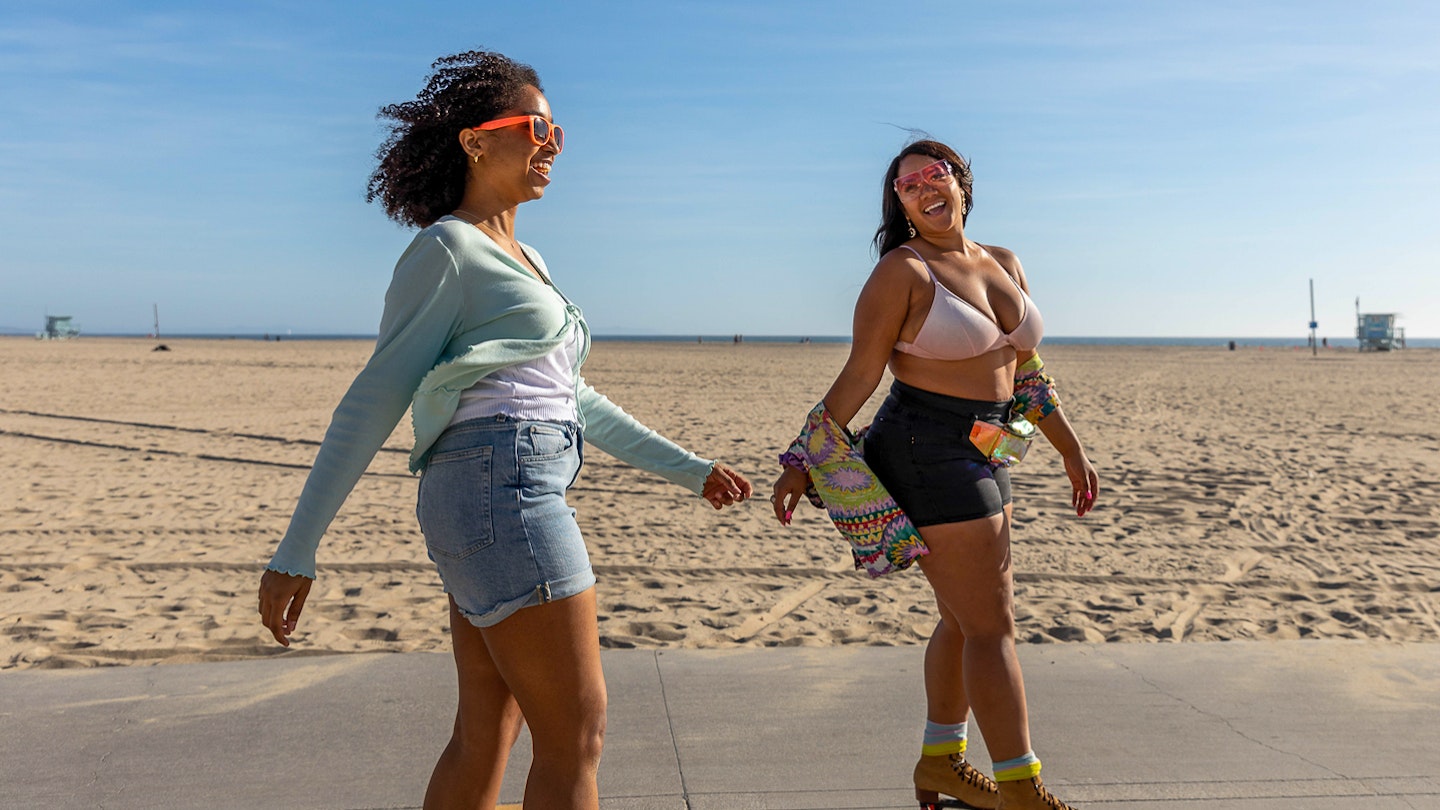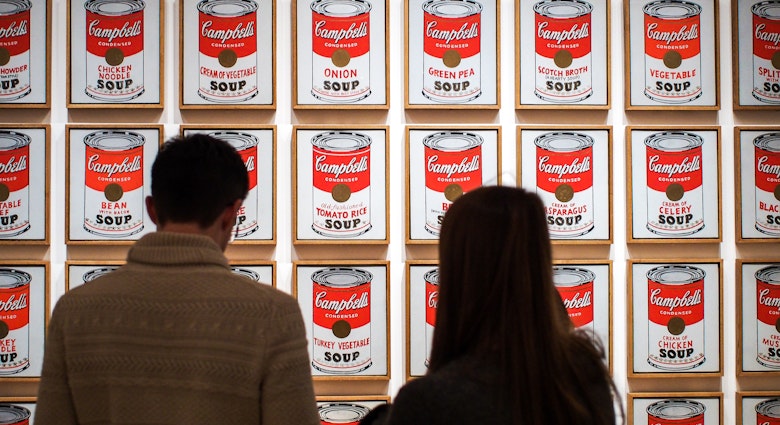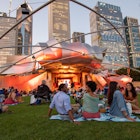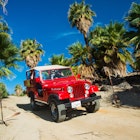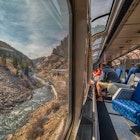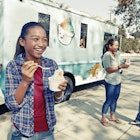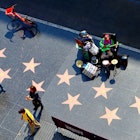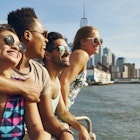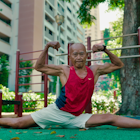In Los Angeles you have beaches, palm trees, endless sunshine, and of course, the entertainment industry. And for decades now its art-focused industries and beautiful cityscape have attracted LGBTIQ+ visitors from around the globe. Many end up making LA their home. Its progressive and open-minded residents have seen the LGBTIQ+ community thrive here, with West Hollywood becoming the city’s center of queer culture.
But beyond being a great place for LGBTIQ+ travelers, Los Angeles is a truly surreal and unique city that you wouldn’t find anywhere else in the world. Only in LA can you bump into Christian Bale and David Beckham at a Pinkberry and drive from the ocean, past a movie premiere, and up into the mountains… all within an hour. Calling a destination “one-of-a-kind” is beyond cliche at this point, but for Los Angeles, there’s simply no other way to describe it.
The best LGBTIQ+ bars and clubs in Los Angeles

Our WeHo favorites
LA’s main hub of LGBTIQ+ activity, and the city’s “gayborhood”, is West Hollywood…which is technically its own city. West Hollywood, often abbreviated as WeHo by locals, has three main thoroughfares: Melrose Avenue, Santa Monica Boulevard, and Sunset Boulevard. Melrose is known for its boutique shopping and Sunset is famous for its bars and clubs, but it's Santa Monica Boulevard where you’ll find a majority of the LGBTIQ+ nightlife.
Most notable is The Abbey. This bar and restaurant has been around for over 30 years and is a bonafide LA institution. Known for its apple martinis and go-go dancers, The Abbey is a massive space that sees crowds every night of the week and is especially busy on the weekends. From their sweaty and provocative dance floor to the sprawling outdoor patio, everyone can find the vibe that fits them best. On the weekends, The Abbey also serves brunch, becoming the perfect spot for visitors who want to check out the local LGBTIQ+ scene without having to feel the pressure of clubbing in LA.
Also in WeHo is Micky’s, which is easily LA’s best spot for drag. All of the Drag Race queens have performed at Micky’s, from Pearl to Raja, Pandora Boxx, and more. In fact, Micky’s puts on a weekly “Showgirls” revue hosted by Drag Race alum Morgan McMichaels. On top of the drag events, Micky’s is always popular thanks to its bevy of parties and events, from Taco Tuesdays to open mic nights, guest DJs, and more. Keep an eye on their events page as there’s always something going on. Other WeHo hotspots include Revolver for pop hits and The Bayou for super-cheap Happy Hour drinks.
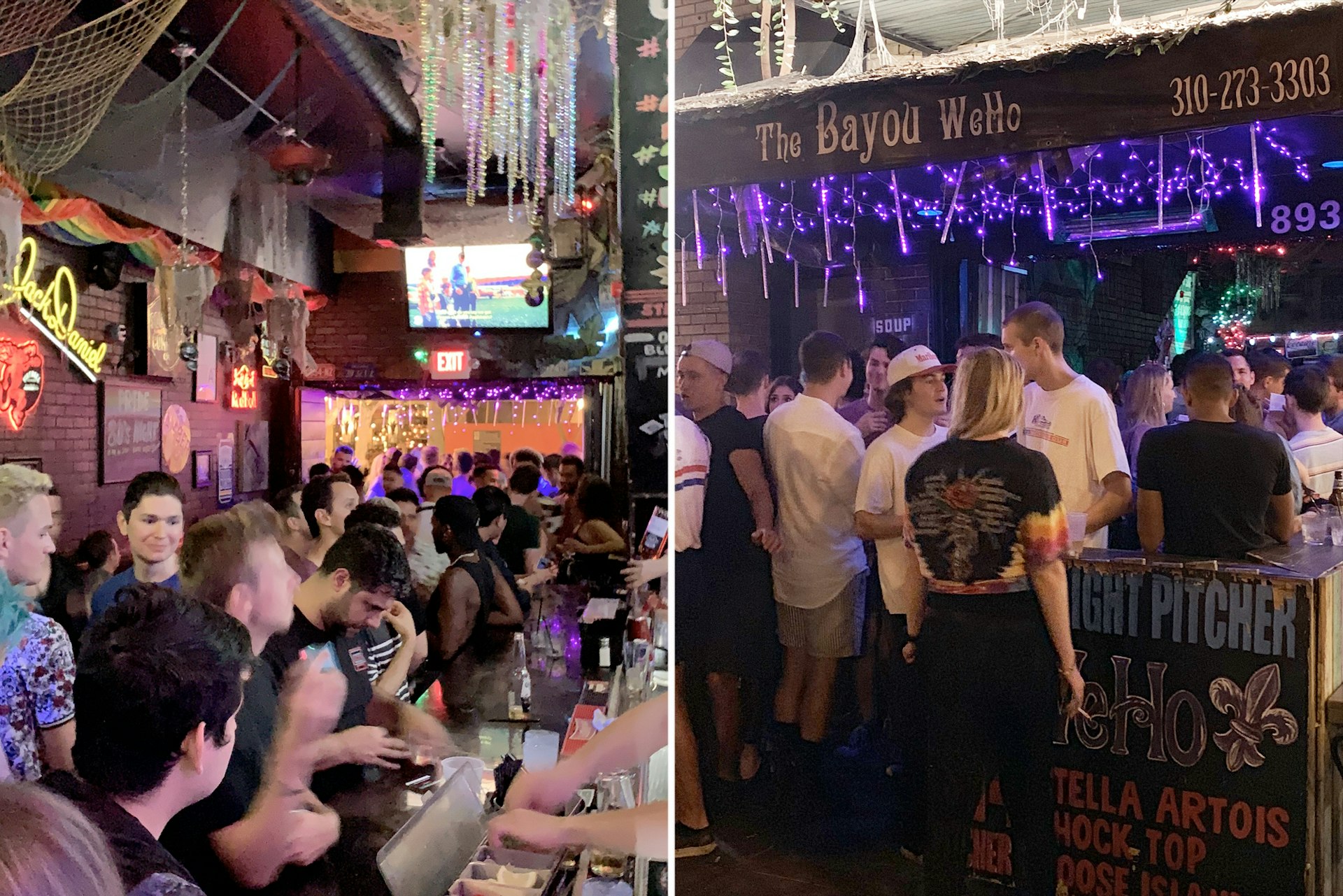
Silver Lake is a grungier alternative
While WeHo is the main gayborhood, Silver Lake has long been home to the alternative queer scene. Grungier, younger, and more diverse amongst those who identify as other-than-gay, Silver Lake has a lot going on and has become one of LA’s coolest neighborhoods. For nightlife, check out Akbar. Opened in the late 90s, the bar was originally meant to be a punk rock space, complete with a lavish Middle Eastern-inspired interior, dim lighting, and cheap drinks.
Through the years, as pop, dance, and trance music has become more popular, Akbar has lost some of its grunge roots and plays more mainstream music, but it still remains an incredibly fun and distinct bar. It also holds a very wide array of different parties and events nightly, from lesbian nights to fetish parties, drag sing-alongs, and more. It’s the kind of bar where, depending on the event, the crowd inside can be wildly different from the night before.
Another Silver Lake institution is Eagle LA. Part bear bar, part leather bar, part kink bar, and part friendly neighborhood hole-in-the-wall, Eagle LA is kind of all over the place (in the best way possible). But what you can always expect is hairy chests, leather harnesses, and jockstraps. If that’s your scene, or if you’re curious to find out, the Eagle is a great place to hit up for a drink. If you’re not into the leather scene, be sure to check their website before visiting as some nights are more intense than others.

The Black Cat is an LA institution
An honorable mention also needs to be given to the Black Cat. Currently, it’s a restaurant and bar that doesn’t cater specifically to the gay crowd (although it does have a highly-regarded menu that includes crab tartine and flat iron steak) but back on December 31, 1966, the bar made history. At the time, it was a gay bar and just before the stroke of midnight, the crowd all embraced for a New Years' kiss. Little did they know the bar had been infiltrated by undercover cops.
The police began beating patrons to the ground and issuing arrests (homosexuality was still illegal back then due to a variety of laws). Not long after the incident, members of the LGBTIQ+ community gathered around the bar and held a protest. This protest also gave rise to a queer newsletter called The Los Angeles Advocate, which still exists and grew into The Advocate we all know today. The Black Cat honors its past with historical photos and newspaper clippings on its walls to remember the 1966 attack.
Excellent LGBTIQ+ spaces beyond the clubs
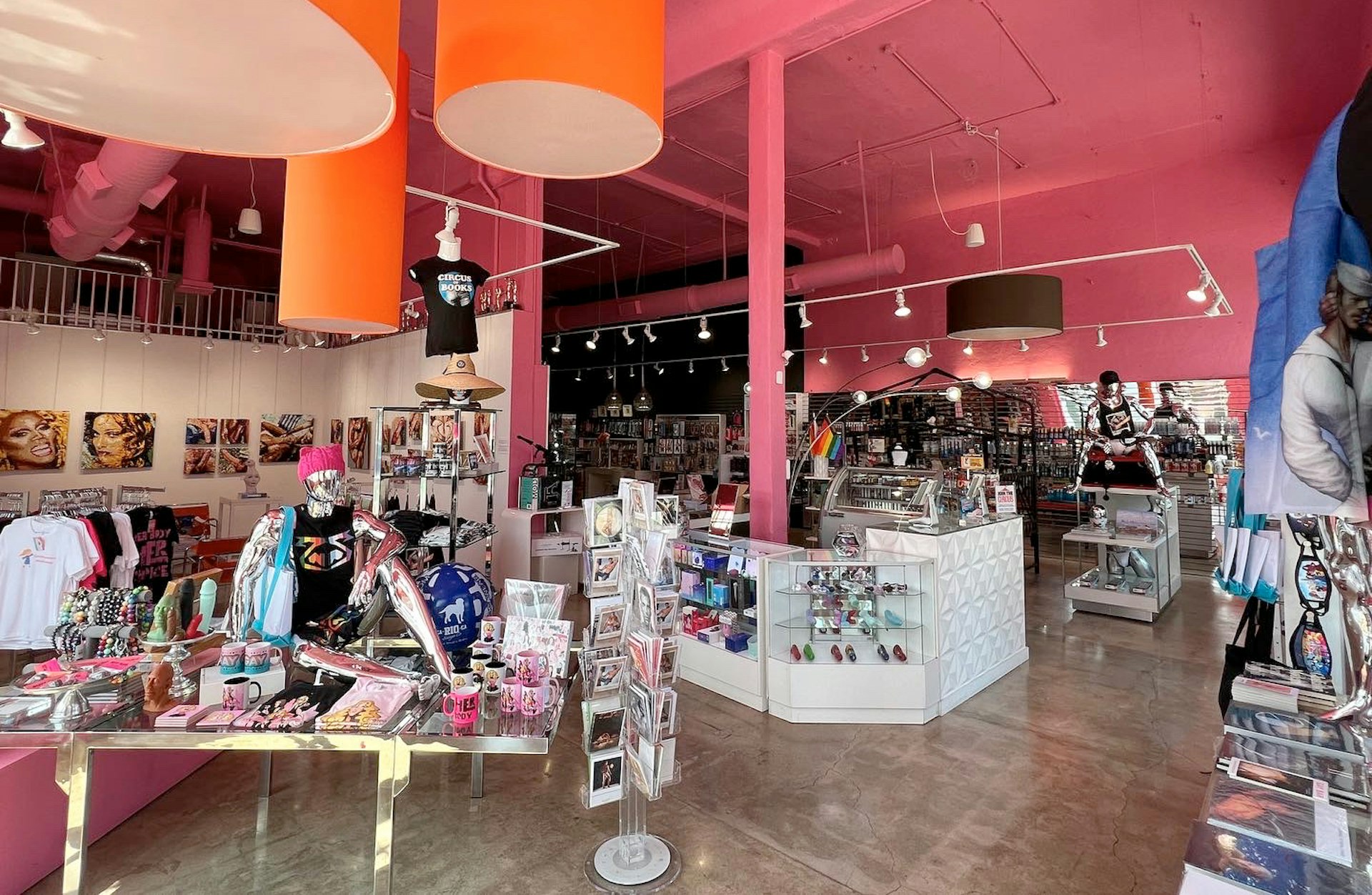
Circus of Books
Circus of Books is an incredibly important LGBTIQ+ space in LA. Oddly enough, this queer bookshop (which also sells art and apparel… along with porn and sex toys) is actually owned by a straight couple who took over the shop in the early ’80s. It became a safe haven for the LGBTIQ+ community during the AIDS crisis and has remained an integral part of LA’s queer culture to this day. The shop’s story is so captivating it was even turned into a Netflix documentary in 2019. Now, Circus of Books has two locations and is totally worth a visit to pick up some excellent books on queer history, and maybe something naughty.
TOM House
Touko Valio Laaksonen was a sketch artist who was better known by the name Tom of Finland. Throughout his life, he drew thousands of hyper-masculine yet homoerotic (and very well-endowed) sketches of men and became one of the earliest-known overtly gay artists in history. At the time, Tom and other artists and photographers were sharing their art through a magazine called Physique Pictorial, which billed itself as a bodybuilding-appreciation magazine, but in reality, was a way to discreetly distribute homoerotic pictures and drawings.
Now, Tom’s house (simply named TOM House) has been preserved as a museum and many of his famous sketches fill every wall of the house. On top of the art, TOM House gives visitors an in-depth look into his life, as well as the history of erotic and homoerotic art.
From the archives
For more queer history, head over to the ONE Archives Foundation. It’s the largest collection of LGBTIQ+ artifacts in the world. From old magazines to newspaper clippings, objects from the Stonewall Uprising, and more, there’s tons to see, learn, and do at the foundation.
A large archive is located at USC, but it’s currently closed for renovations. However, the ONE Gallery in West Hollywood is still open for visitors. It houses a rotating collection from the larger archive and also puts on special events and speaker series. Artifacts from the ONE Foundation were even used as the source material for HBO Max’s LGBTIQ+ docuseries, Equal.
Where to find the LGBTIQ+ community
LA’s most important LGBTIQ+ community space is the Los Angeles LGBT Center. On a community level, the center, which has various locations around the city, hosts events and provides housing and social services, HIV/STD testing, advocacy programs, and more.
From a visitor’s perspective, the center hosts some awesome events which, being in LA, attracts some big names. At various fundraising concerts, comedy shows, and galas, the LGBT Center hosts performers like Kathy Griffin, Lily Tomlin, Sia, Jenifer Lewis, and many more. Earlier in 2022, the Center hosted a lesbian comedy night and upcoming performances include a concert by the Trans Chorus of Los Angeles.

If there are no events going on when you’re visiting, you can still stop by the Center’s Hollywood location and check out the Liberation Coffee House. Liberation is staffed completely by graduates from the Center’s culinary program, which helps provide underserved LGBTIQ+ youth and seniors with skills in the culinary and hospitality industries to help them find meaningful employment.
They serve coffee drinks, chai, and tea, along with standard cafe fare like overnight oats and house-made biscotti. But the real treat is all the not-so-typical goodies they bake, like guava and cream cheese scones and gluten-free iced coconut donuts. Remember, you can have as many donuts as you want because it’s for a good cause!
Save the date: LA’s best LGBTIQ+ events

Los Angeles’ biggest queer event of the year is LA Pride, which attracts tens of thousands of participants annually. For 2022, LA Pride hosted numerous events, including a film screening, an LGBTIQ+ takeover of Universal Studios, a giant music festival headlined by Christina Aguilera, and of course, the parade! LA Pride takes place yearly each June.
As an alternative to LA Pride, DTLA Proud is an organization that bills itself as “for the community, by the community” and seeks to celebrate the LGBTIQ+ community without all the commercialization. They hold a yearly pride event that’s also known to be more inclusive to people of color and those who identify as trans and nonbinary.

Being LA, you obviously can’t visit without watching movies, and 2022 marks the 40th year for Outfest, LA’s LGBTIQ+ film festival. Every year, a mix of newcomers and veterans showcase their films, from documentaries to dramas, horror, and even short films. This year, the highlight of the festival is expected to be They/Them, a highly-anticipated horror movie about a deranged “conversion camp” for trans and nonbinary teens. The film stars Kevin Bacon as the camp’s nefarious owner and it’s set to premiere at the closing night gala. Outfest takes place annually and is normally held during the summer months.
What LGBTIQ+ travelers need to know before going to LA

It's important for visitors to know that Los Angeles is experiencing an uptick in crime. While this is all heavily overblown by conservative media, it’s always good to know the facts and use common sense. It’s also important to remember that LA is an extremely resilient city and the residents here have, quite literally, seen it all.
Another important thing to note is that Los Angeles is a very big city with a bit of a traffic problem. The travel brochures might show you images of the Hollywood Sign, Santa Monica, and Disneyland; but in reality, between geographical distance and traffic jams, trying to see all three on the same day would be a maddening nightmare.
Los Angeles is a city that you really should map out before visiting. Know how many miles downtown is from LAX, or how far Hollywood is from Malibu. Plan your days so you stay in one section of the city at a time, otherwise, you could be wasting hours sitting in a car.
Resources and info for LGBTIQ+ visitors
As mentioned above, the Los Angeles LGBT Center is a great resource for locals and visitors and has various locations around town.
The Los Angeles LGBTQ Chamber of Commerce is another great resource that can help you find LGBTIQ-owned businesses as well as businesses that have expressively committed to being allies. Hotels listed by the chamber of commerce include the W Hollywood and the Mondrian, which is located in the heart of the Sunset Strip in West Hollywood.

